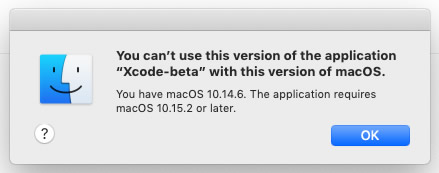

The development language is Objective-C, development tools is Xcode software and iOS SDK. And playgrounds are built on top of the simulator, so you can experiment there too (as long as the playground is building for iOS or tvOS and not macOS). High Sierra 10.14 Mojave, which is released on June 5, 2018. However, what is part of Xcode is the simulator, and so you can write apps for iOS 13 and try them out in the simulator. For information on the compatibility requirements for Xcode 10.2, see Xcode Release Notes. The SDK comes bundled with Xcode 10.2 available from the Mac App Store.

So Xcode 11 on macOS Mojave can't run apps that use Catalina features like Combine. Overview The macOS 10.14.4 SDK provides support for developing apps for Macs running macOS Mojave 10.14.4.
#Xcode for mojave how to
There are many reasons for that, but fundamentally it comes down to some changes having to happen in the operating system itself-either because the changes actually need to be in the kernel, or because something OS-internal has changed in a non-backwards-compatible way. However, during this article, I will be able to show you How to Install Xcode on macOS Mojave on Windows Therefore, we tend to are finding a distinct. Stepping beyond that, an SDK doesn't contain enough information to run things only to build them.

They're more like ARKit, MapKit, and Intents: part of Apple OSs, made available for use by apps via Xcode and its SDKs. Combine, SwiftUI, CryptoKit, and RealityKit are frameworks written in Swift, but they're not part of the Swift Open Source project. It's first worth distinguishing "the Swift runtime and standard library" from "the SDK".


 0 kommentar(er)
0 kommentar(er)
